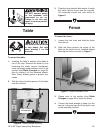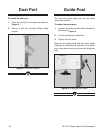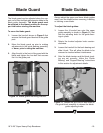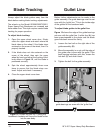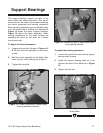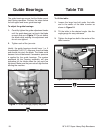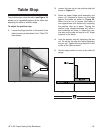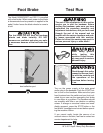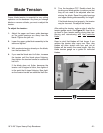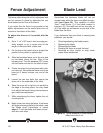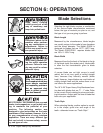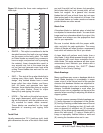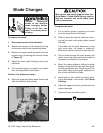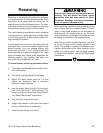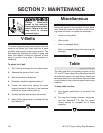
18" & 20" Super Heavy-Duty Bandsaws -21-
Figure 22. Blade tension gauge.
Blade Tension
5. Turn the bandsaw OFF. Double check the
tracking and blade guides to make sure that
they do not need to be adjusted after ten-
sioning the blade. Reset the guide bearings
and upper blade guide assembly for height.
If the blade does not cut properly, the tension
may be incorrect. Re-adjust the tension.
After setting the tension, make a note of what the
tension gauge reads. See
Figure 22.
Use this to
go back to your tension setting during later ten-
sioning and retensioning with
that particular
blade.
Keep in mind that blades will last longer if you
release the tension after every use. Also, new
blades will often stretch with use, and not all
blades will be exactly the same length. Use the
blade tension gauge as a guide for individual
blades.
Proper blade tension is essential to any cutting
operation on the bandsaw. Any time you change
blades or remove a blade, you must re-adjust the
tension.
To adjust the tension:
1. Adjust the upper and lower guide bearings
so the guide bearings are away from the
blade. Tighten the jam nut.
2. Lower the upper guide block assembly to the
table and tighten.
3. With moderate tension already on the blade,
turn the bandsaw ON.
4. If you see the blade start to flutter, increase
the tension until the blade stops fluttering,
then tighten the tension handle an additional
half turn.
If the blade does not flutter, decrease the
tension until it begins to flutter, then tighten it
to the point that it stops fluttering. Now tight-
en the tension handle an additional half turn.



